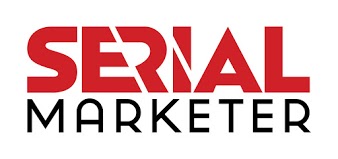Here's today&39;s latest Social Media Insider from MediaPost. You can see more discussion of these ads in the previous post.
The self-service ad model may not be the
secret to Facebook&39;s future fortunes, but it presents marketers with
some largely untapped opportunities for reaching the most precisely
targeted audiences online.
If you talk to Facebook&39;s users
about advertising, you&39;ll hear a number of criticisms. Some say it&39;s
brash or irrelevant. Many others don&39;t notice it at all. I&39;d expect
many consumers wouldn&39;t even think of the best ads as advertising, such
as those ads for TV show or movie premieres on the homepage where you
RSVP if you&39;re going. Some of the worst problems with the site&39;s
advertising have been minimized, such as those in my musings last
summer on Facebook&39;s &39;Jewhavioral&39; targeting and overly personal weight loss ads.
Forrester&39;s
Marketing Forum last month provided me with an excuse to run another ad
trial, as I demoed the platform to an attendee during a break and wound
up creating a live campaign. I was covering the event as a blogger (read the roundup), so I had something to offer. Here are a few things I learned in the process. You can view screen shots from the campaign on Flickr or SlideShare.
- Facebook self-service ads remain as easy
as ever to create. While I can&39;t say my ad copy was perfectly written,
putting up something passable took all of a few minutes. There have
been few changes since the service launched.
- The
targeting options such as Keywords and Workplaces allow precise ways to
reach consumers volunteering this information. I had the campaign
target people working at Forrester Research, which brought up about 400
people in the United States. Most advertisers won&39;t want to cast such
narrow nets, but the option&39;s there.
- Creating similar
ads is also a cinch. I used this feature to create five versions, all
of which are shown on Flickr and SlideShare. These include ads
targeting Forrester&39;s competitors, and one targeting Forrester
employees in the Netherlands.
- Expect low CPMs.
Recommended bids ranged from 30 cents to 46 cents. I set my bids
significantly higher since I was targeting fewer than 1,500 people
through the various versions of the ads. I tried entering various other
keywords and targeting options and couldn&39;t find anything higher than
50 cents. More precise targeting does not lead to higher recommended
bids.
- The actual CPM after a week was 60 cents across
the campaign. If Facebook is able to reach its $5 billion valuation,
it&39;s not coming from advertisers like me.
- The
performance was underwhelming, with a 0.25% click-through rate. That
could be the fault of the ads. One ad targeted to Forrester employees
where I used a better image reached a 0.60% CTR. I also know at least
one of the clicks came from the analyst Jeremiah Owyang, who was
featured in that ad. Moral: people will click ads with their own
picture in it. But do that too much and you&39;re probably going to creep
out everyone who sees it. Fortunately that targeting&39;s not offered by
Facebook directly, though some application ad networks can pull in
profile pictures.
After going through the process as an advertiser,
I&39;m reminded of how relevant the advertising can be for consumers.
Advertisers know a lot about me from the site, and they can infer a lot
more. Fans of "30 Rock," Christopher Guest movies, and Jonathan Safran
Foer books living in New York probably would welcome hearing about
restaurants in the city&39;s theater district. The cost of testing these
ads is negligible; for around $15, I amassed over 25,000 impressions,
which is plenty of information should I choose to use it for another
campaign.
Self-service ads won&39;t be the best option for
running a major branding campaign on Facebook. The engagement ads on
the homepage serve that purpose. With this kind of targeting, though,
I&39;ll fork over that quarter per click when there&39;s a reason to reach a
segment of Facebook&39;s audience.



![Reblog this post [with Zemanta]](http://img.zemanta.com/reblog_e.png?x-id=7bb5ce6b-3669-4630-b7c1-641615c25e9e)



No Comments
Leave a comment Cancel